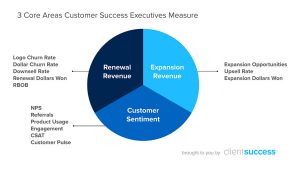Don’t get overwhelmed by a glut of data. Columnist Joshua Reynolds outlines key steps to help you avoid data fatigue.

For marketers, the mandate to drive revenue has led to an explosion of analytics solutions. There’s a dashboard for virtually every marketing metric you can think of — buzz, sentiment, NPS (Net Promoter Score), brand engagement and several other voice-of-customer visualizations.
But the barrage of bar charts blinking in the faces of marketers is blinding them to the data that really matters — the data that tells them what’s driving their sales, what’s driving their competitors’ sales and how to steal market share.
It’s a perfect storm of data fatigue and solutions overload that’s only worsening as the expectations on CMOs continue to escalate, according to the latest editions of both Gartner’s CMO Spend Survey and the CMO Survey, a biannual study commissioned by the American Marketing Association, Deloitte and Duke’s Fuqua School of Business.
According to Gartner, some 73 percent of marketers now own or share P&L responsibility, and over 90 percent will carry P&L mandates by 2018. So like it or not, even the most impressive brand metrics won’t matter if revenue doesn’t increase.
And for most marketers, being able to convincingly quantify their impact on revenue is still a long way off, but it’s a must-have metric they continue to chase with ever-increasing marketing analytics budgets.
More data, more problems
The ever-expanding glut of data and analytics options is actually making matters worse. Since 2014, the number of martech vendors has increased from around 1,000 to over 3,800, according to marketing technologist Scott Brinker.
Meanwhile, data sources such as social media continue to grow. Facebook averaged four percent user growth over the last two quarters, despite already owning a massive user base. Instagram is still enjoying over 10-percent annual user growth. Pinterest has been rolling since joining the 100-million-user club late last year. Even Twitter, criticized for its stalling user base, gained five million new active users last quarter — its biggest gain in a year.
With both data sources and data dashboards growing relentlessly, it’s predictable that many marketers have grown exhausted by analytics.
The problem is that, in our estimation at Quantifind, roughly 80 percent of this external consumer conversation has no correlation whatsoever to revenue. And the majority of tools and dashboards your teams are wrestling weren’t designed to explain movements in revenue or reveal new revenue opportunities.
So if you’re a marketer trying to demonstrate your contributions to the bottom line, you risk falling into a vicious cycle of more data, less knowledge and steadily growing fatigue.
How can marketers deal with data fatigue and focus on the data that matters? Read on for five steps that will help.
1. Find the KPI you and your executive team care about most
If you want to demonstrate your impact on the business, start with finding the data source that your company relies on to tell them how their business is doing. Sales. Units shipped. Churn. Whatever the metric, “KPI” doesn’t just mean “Key Performance Indicator”— it also stands for “Key Political Incentive.”
What’s the KPI that senior management cares about, the one that’s at the heart of their personal and organizational agendas? That’s your data foundation.
If your other data points don’t tell you about this KPI, they’re only distracting you from the analysis that will get heard by the right people, tell the right story and achieve results.
2. Filter out the noise that has nothing to do with your business
If your chosen KPI is revenue, and you want to see how it relates to, say, social media activity, you can’t just start layering a financial graph on top of a graph of likes and retweets. Nor can you rely on aided, inorganic surveys alone to help you discover what’s moving the needle.
Make sure you’re not wasting time with things like uncorrelated buzz, sentiment or ambiguous “engagement” metrics. Get curious about how you’re filtering out the static.
Ask about what does and doesn’t make it into your analytics data stream. And make sure you’re listening to real people who are really talking about you, your brand, your product — and your competitors.
3. Explore the data patterns that matter; let the signal talk to you
Don’t just look for casual coincidences — like two things loosely going up or down together. Instead, look for the data patterns that are most predictive of the KPIs you care about.
Also, look for data patterns that are instructive. It might be interesting to know, for example, that your last marketing campaign generated a lot of money and a lot of buzz on Twitter — but in specific terms, did you learn anything about what steps to repeat, where optimizations could be made, etc.?
It’s much more useful to know if that buzz reflects enthusiasm among certain groups, enthusiasm for a product, enthusiasm for a celebrity endorser and so on.
4. Use those data patterns to focus on what matters, and to take what doesn’t off your plate
Once you’ve found the signal, you can use it to tell what actually matters from what doesn’t. No longer will you need to wonder if a flurry of Facebook likes is worth celebrating, whether a seeming niche community of Twitter complainers is affecting your bottom line or if all those consumer call log transcripts contain some hidden strategic gem.
The fatigue of wading through lakes of ambiguous data is done. Now you know the metrics to watch from the ones you can afford to ignore.
5. Work across silos, and share information to avoid redundancies
Growth is everybody’s business. For too long, organizational rifts have separated well-intended departments from sharing their insights.
Data analytics, consumer insights, research, digital strategy and brand marketing teams need to work together to make sure they share what they know and illuminate each others’ blind spots. Only then can you avoid wasting time chasing answers to questions you already have answers to — or questions that don’t matter.
Share information openly, and organize your workflow around what drives revenue. Without shared data, you can’t organize your other analysis work around a central thesis that’s mathematically correlated to driving your business forward.
Some opinions expressed in this article may be those of a guest author and not necessarily Marketing Land. Staff authors are listed here.
Marketing Land – Internet Marketing News, Strategies & Tips
(54)







